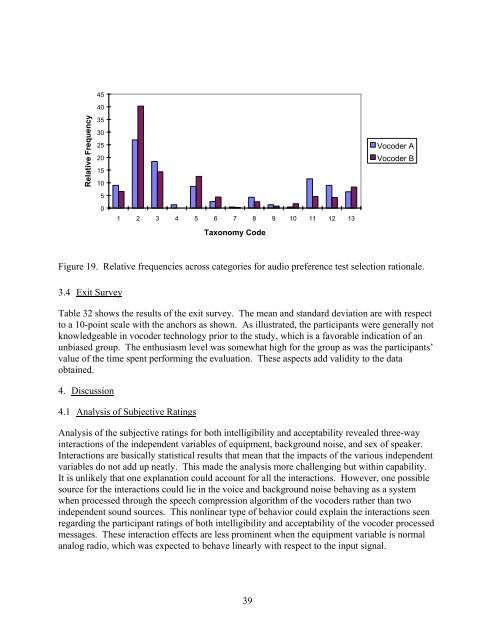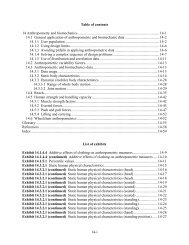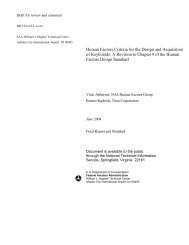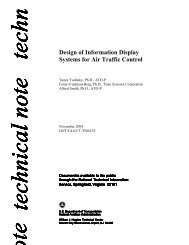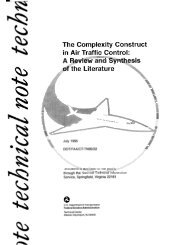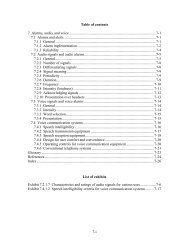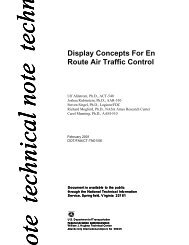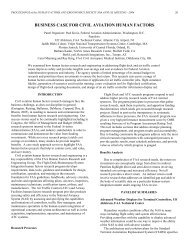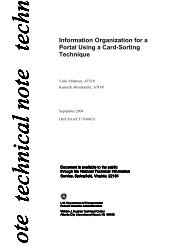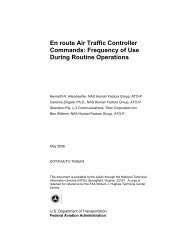Human Factors Evaluation of Vocoders for Air Traffic Control ... - FAA
Human Factors Evaluation of Vocoders for Air Traffic Control ... - FAA
Human Factors Evaluation of Vocoders for Air Traffic Control ... - FAA
Create successful ePaper yourself
Turn your PDF publications into a flip-book with our unique Google optimized e-Paper software.
Relative Frequency<br />
45<br />
40<br />
35<br />
30<br />
25<br />
20<br />
15<br />
10<br />
5<br />
Vocoder A<br />
Vocoder B<br />
0<br />
1 2 3 4 5 6 7 8 9 10 11 12 13<br />
Taxonomy Code<br />
Figure 19. Relative frequencies across categories <strong>for</strong> audio preference test selection rationale.<br />
3.4 Exit Survey<br />
Table 32 shows the results <strong>of</strong> the exit survey. The mean and standard deviation are with respect<br />
to a 10-point scale with the anchors as shown. As illustrated, the participants were generally not<br />
knowledgeable in vocoder technology prior to the study, which is a favorable indication <strong>of</strong> an<br />
unbiased group. The enthusiasm level was somewhat high <strong>for</strong> the group as was the participants’<br />
value <strong>of</strong> the time spent per<strong>for</strong>ming the evaluation. These aspects add validity to the data<br />
obtained.<br />
4. Discussion<br />
4.1 Analysis <strong>of</strong> Subjective Ratings<br />
Analysis <strong>of</strong> the subjective ratings <strong>for</strong> both intelligibility and acceptability revealed three-way<br />
interactions <strong>of</strong> the independent variables <strong>of</strong> equipment, background noise, and sex <strong>of</strong> speaker.<br />
Interactions are basically statistical results that mean that the impacts <strong>of</strong> the various independent<br />
variables do not add up neatly. This made the analysis more challenging but within capability.<br />
It is unlikely that one explanation could account <strong>for</strong> all the interactions. However, one possible<br />
source <strong>for</strong> the interactions could lie in the voice and background noise behaving as a system<br />
when processed through the speech compression algorithm <strong>of</strong> the vocoders rather than two<br />
independent sound sources. This nonlinear type <strong>of</strong> behavior could explain the interactions seen<br />
regarding the participant ratings <strong>of</strong> both intelligibility and acceptability <strong>of</strong> the vocoder processed<br />
messages. These interaction effects are less prominent when the equipment variable is normal<br />
analog radio, which was expected to behave linearly with respect to the input signal.<br />
39


